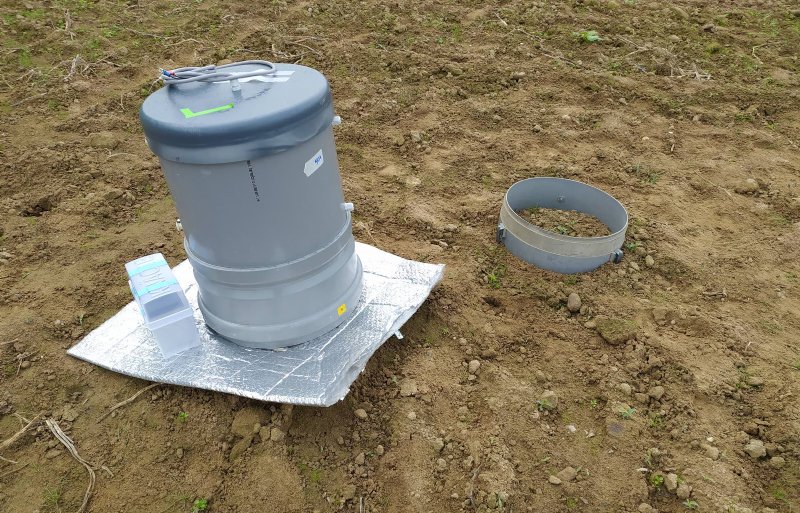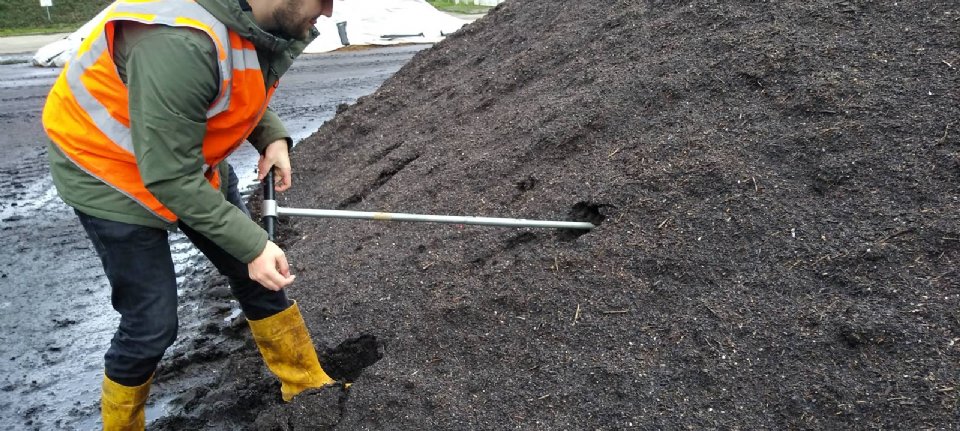Methane is a powerful greenhouse gas. It emits ruminants and swamps. Natural forest and grassland soils are known to deplete methane. Agricultural soils can also do this by using the bacteria in the compost.
“You have to see the effect of the fertilizer as a methane decomposer in the right proportions,” says researcher Paul Baudelaire. He explains the “added value of unknown microbes in compost” at his workplace at the Netherlands Institute for Ecology (NIOO-KNAW) in Wageningen. There are microbes that can live in air that contains very low amounts of the gases hydrogen, carbon monoxide, and methane. And these microbes are important to our climate.
Methane can penetrate the soil through the air. If there is little oxygen in the soil, methane can also form there. There are special microbes in the soil that seize the opportunity to break down this methane. These are organisms with unique enzymes that can therefore survive on low amounts of methane. In this way they contribute to the reduction of greenhouse gases.
They already do this to a large extent in natural forest and grassland soils, while agricultural soils are less suitable for these microbes. But by “inoculating” that soil with compost microbes, the ability to partially decompose methane can be restored. In this way, agricultural soils also contribute to reducing global warming.
A group of bacteria can survive on low concentrations of methane in the air
According to Baudelaire, “dry” soil contains very little methane. But methane enters the soil through the air. The concentration in the air is increasing by 1 percent per year, providing opportunities for bacteria in the upper layer of the soil.
“A certain group can survive on that low percentage in the air. Agricultural activity suppresses these species. With the knowledge derived from different projects, we know how we can control the process of methane decomposition in agricultural soils,” says the NIOO-KNAW researcher. .
Effects on clay and sand
For a BE-Basic Foundation research project, the effects of residual organic fluxes on GHG emissions from agricultural land were tested on clay (Lelystad) and sand (Fredipil). In addition to sewage sludge, pulp and beetroot leaves, compost was examined.
“There was a collapse in these residual flows, and at the same time the uptake of methane from the air increased,” Baudelaire says. Fertilizer has been shown to be the best when looking at methane uptake and at the same time the emission of carbon dioxide and nitrous oxide. “Add compost, and you get the best greenhouse gas reducer.”
Compost, and certainly green manure, is only available on a limited scale. “Moreover, we know that compost is never used alone in agriculture. That is why we have studied different types of compost in mixtures, including digestion and sewage sludge. Baudelaire shows graphs showing that the effect in mixtures is also methane depletion. It seems Green manure contains the most methane decomposers.

“It was surprising to us that the species that contribute positively to the impact are already living in the soil and even increasing. The amount of fertilizer and residual flow played a major role. 20 tons per hectare works, 5 tons does not work,” says the researcher.
The effect of green manure is much higher than that of compost, where “mildew-enriched green manure” works best. Compost producers can aim to obtain optimal traits and composition of the micro-life in the compost. “Feedstock, pre-treatment and how long it sits seem to be critical factors for the active species in the compost,” Baudelaire explains.
Soils that have not been supplied with specific methane decomposers for years lose their active degradation. To investigate this, soils with a long history are needed. Researchers have found this soil at research sites abroad. Adding specific compost with living organisms reinvigorated the process.
The right combination
VFG fertilizer contains more ammonium salts, which inhibits methane microbes, and is given forced air, so that less methane is created. This creates a difference in the numbers and composition of the right methane-oxidizing bacterial species. Special fertilizers, which focus more on fungi, contain more methane makers and eaters. The right combination of the two can be very beneficial to your soil.
In composting, manufacturers can stimulate species that can survive with more or less methane. Another group of microorganisms in compost appears to break down nitrous oxide, which is also a potent greenhouse gas.
Long term process
“It takes time to learn to understand all of those different mechanisms,” Baudelaire says. “We still don’t know much about the interaction between all these organisms. It’s clear that the microbes in the compost live in the soil. We have to investigate how effective they are in the field and what determines their action.
The researcher knows that there are methane-forming bacteria in the complex of different organisms, which in principle could lead to higher methane emissions. “But they can also make sure that methane decomposers survive, so they quickly become active when methane increases in their environment.” So what seems bad at first glance can actually turn out to be good.
Smart use of green manure enriches the soil
Green manure may be mixed with other residual fluxes, as long as it is not compost. This would stand in the way of a broader exemption for compost to account for minerals. Ecologist Paul Baudelaire believes farmers can mix the residual flows themselves. In this way, the methane-depleted fertilizer effect can be used over a larger area of hectares. Hence the agricultural soil will become more suitable for the climate.
The use of organic residual fluxes with crop residues and green manure makes farming more sustainable. Bodelier: ‘It enriches and revitalizes the micro-life in the soil. In collaboration with the Dutch Waste Management Association and the Organic Waste Association, we are looking at what can be done with microbiology in compost. There are more possibilities of structural improvement and water holding capacity.
The ecologist says compost makes an important contribution to a resilient agricultural system. Added value compared to mineral fertilization. “Ultimately, we want to aim for a healthy microbiome. And we’re trying to create awareness for that. This will happen in the coming years in the ClipsMicro project within the framework of the National Science Agenda.
Interest in the biodiversity of soil life is increasing sharply. In the framework of the EU Soil Strategy, attention is being paid to this, and large research projects and collaborations are possible. “Look at the big picture,” Baudelaire stresses. “There are a lot of things that need to be done, although it is often still not clear exactly how they will work. We want to know how you can steer soil life in the right direction.

“Total coffee specialist. Hardcore reader. Incurable music scholar. Web guru. Freelance troublemaker. Problem solver. Travel trailblazer.”







More Stories
GALA lacks a chapter on e-health
Weird beer can taste really good.
Planets contain much more water than previously thought